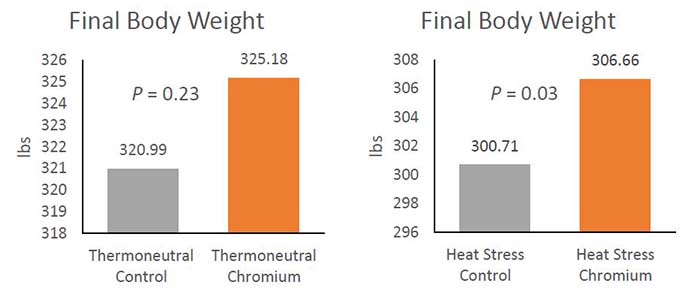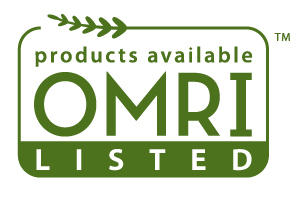KemTRACE® Chromium – the first product of its kind on the market – is a water soluble, highly bioavailable, organic source of chromium that helps improve glucose utilization and reduce the negative impacts of stress for increased cellular energy and function. This results in improved growth and immunity in swine. KemTRACE Chromium has been fed to millions of animals around the globe since its introduction in 2000. It is registered in more than 35 countries worldwide and is the only U.S. Food and Drug Administration-reviewed form of chromium propionate.
You are viewing United States
- United States
- Canada
- Mexico
- South America
- EMENA
- Sub-Saharan Africa
- Russia
- South Asia
- Asia Pacific
- China
A global presence, with local expertise. Visit our regional sites:
- United States
- Canada
- Mexico
Popular Searches
- Animal Nutrition & Health
- KemTRACE® Chromium
- KemTRACE® Chromium for Swine
Chromium for Swine
What is KemTRACE® Chromium?
KemTRACE® Chromium-OR — an OMRI Listed®, organic-compliant form of chromium propionate — is also available in the U.S. for use in organic swine diets.
KemTRACE Chromium and KemTRACE Chromium-OR are manufactured in the U.S., sourced from U.S.-based raw materials and are available in two product concentrations:
- 0.04% - for use in complete diets
- 0.4% - for use in a premix prior to inclusion in complete diets

Essential to Your Swine Operation
Chromium mobilizes more blood glucose into tissue allowing for improved performance based on each individual animal’s hierarchy of needs. In sows, chromium supplementation can result in fewer non-productive sow days, greater feed intake during lactation, improved body conditioning, and increased high quality milk that results in larger weaned pigs.1,2 A larger weaned pig will become a higher performing animal for the rest of the life cycle.3 Improved performance extends beyond sows and nursery into grow-finish pigs. An increase in average daily gain and increase in feed intake decrease in feed conversion helps grow-finish pigs to reach their optimal genetic potential while keeping producers profitable.4,5,6
Stress has a tremendous impact on the performance of pigs. Many factors such as health, environment, social circumstances, management practices, herd density and nutrition contribute to the overall stress load that a pig faces daily. When a pig is experiencing stress conditions, cortisol is released, resulting in behavioral, metabolic, immunological and intestinal changes.7,8,9 Studies have shown that cortisol can have a negative impact on performance.10,11,12 Chromium has been shown to reduce the levels of cortisol, thereby reducing the negative impacts of stress.13 The results of both university and field evaluations demonstrate that KemTRACE Chromium is a highly bioavailable source of chromium that minimizes the impacts of stress, thus improving both performance.
While stress comes in many forms, one of the easiest types to control in a research setting is heat stress. The difference in performance between the control and the chromium supplemented diets of thermoneutral and chronically heat stressed pigs are displayed below.

For more information on this study, download Effects of KemTRACE® Chromium on Finishing Pigs Under Thermoneutral or Heat Stress Conditions.

KemTRACE Chromium and KemTRACE Chromium-OR Swine Feeding Instructions:
Feeding Period |
Feeding Rate (Not to Exceed) |
Nursery: Entire nursery period (approximately 42 days) |
200 ppb |
Sows: Gestation/Lactation |
200 ppb |
Grow/Finish |
200 ppb |
Delivers 0.2 parts per million (200 parts per billion) chromium (from chromium propionate) when added and thoroughly mixed at the rate of 1 pound per ton of complete broiler feed.
Want more information? Contact a Kemin representative today!
Product Specifications
References
1Sohn, K.S., and C.V. Maxwell. 1999. New Technologies for sow nutrition and management – review. Asian-Aus. J. Anim. Sci. 12:956-965.
2Hagen, C.D., M.D. Lindemann, and K.W. Purser. 2000. Effect of dietary chromium tripicolinate on productivity of sows under commercial conditions. Swine Health Prod. 8:59-63.
3Collins, C.L., J.R. Pluske, R.S. Morrison, T.N. McDonald, R.J. Smits, D.J. Henman, I. Stensland, and F.R. Dunshea. 2016. Post-weaning and whole-of-life performance of pigs is determined by live weight at weaning and the complexity of the diet fed after weaning. Anim. Nutr. 3:372-379.
4Lawrence, B.V., D. Overend, S.A. Hansen, J. D. Hahn, and R. Ogaard. 2004. Chromium propionate influence on pig performance and meat quality. J. Anim. Sci. 82 (suppl):143.
5Mayorga, E.J., S. K. Stoakes, J.T. Seibert, E. A. Horst, M. Abuajamieh, S. Lei, L. Ochoa, B. Kremer, and L. H. Baumgard. 2016. Effects of dietary chromium propionate during heat stress on finishing pigs. J. Anim. Sci. 94 (suppl) 2): 139.
6Gebhardt, J.T., H.S. Cemin, J.C. Woodworth, M.D. Tokach, S.S. Dritz, J. M. DeRouchey, J.A. Loughmiller, and R.D. Goodband. 2017. Effects of KemTRACE Chromium level and feeding regimen on finishing pig growth performance and carcass characteristics. J. Anim. Sci. 95 (suppl): 275.
7Paredes, A.H., N.R. Salvetti, A.E. Diaz, B.E. Dallard, H.H. Ortega, and H. E. Lara. 2011. Sympathetic nerve activity in normal and cystic follicles from isolated bovine ovary: Local effect of beta-adrenergic stimulation on steroid secretion. Reprod. Biol. Endocrinol. 9:66.
8Martinez-Miro, S., F. Tecles, M. Ramon, D. Escribano, F. Hernandez, J. Madrid, J. Orengo, S. Martinez-Subiela, X. Manteca, and J.J. Ceron. 2016. Causes, consequences and biomarkers of stress in swine: An update. BMC Veterinary Research 12:171.
9Gebregeziabhea, E. 2015. The effect of stress on productivity of animals: a review. J. Biology, Agriculture and Healthcare 5 (15):14-21
10Klemcke, H.G. 1995. Placental Metabolism of Cortisol and Mid- and Late Gestation in Swine. Biology of Reprod. 53:1293-1301.
11Einarsson, S., Y. Brandt, N. Lundeheim, and A. Madej. 2008. Stress and its influence on reproduction in pigs: a review. Acta Veterinaria Scandinavica 50:48.
12C. Mohling, A.K. Johnson, L.A. Karriker, K.J. Stalder, S.M. Millman, and J. Coetzee. 2018. Blood cortisol levels higher in lame sows. National hog farmer May, 2018. http://www.nationalhogfarmer.com/animal-well-being/blood-cortisol-levels-higher-lame-sows
13A.T., B..J. Leury, M.A. Sabin, C.L. Collins, and F.R. Dunshea. 2014. Dietary nano-chromium tripicolinate increases feed intake and decreases plasma cortisol in finisher gilts during summer. Tropical Animal Health and Production 46:1483-1489.
Have a Question?
If you have a questino about our products and services, or just want more information, fill out the form below and someone on our team will be in contact with you.
Products
Careers
Careers
- California Residents
- California Supply Chain Act
- Email Disclaimer
- GDPR Personal Data Addendum
- General Terms & Conditions for Vendors
- Global Environmental Policy Statement
- Indirect Cost Estimates
- Kemin Terms & Conditions
- Modern Slavery Act Transparency Statement
- Privacy Policy
- Sitemap
© Kemin Industries, Inc. and its group of companies All rights reserved. ® ™ Trademarks of Kemin Industries, Inc., USA
Certain statements may not be applicable in all geographical regions. Product labeling and associated claims may differ based upon government requirements.
You are viewing United States
- United States
- Canada
- Mexico
- South America
- EMENA
- Sub-Saharan Africa
- Russia
- South Asia
- Asia Pacific
- China
A global presence, with local expertise. Visit our regional sites:
- United States
- Canada
- Mexico
Privacy Policy
By browsing this site you permit us and our partners to place identification cookies on your browser and agree to our use of cookies for marketing. Review our cookies policy for details.


%20-%20English_12.pdf/_jcr_content/renditions/cq5dam.thumbnail.319.319.png)
%20-%20English_13.pdf/_jcr_content/renditions/cq5dam.thumbnail.319.319.png)
%20-%20English_00.pdf/_jcr_content/renditions/cq5dam.thumbnail.319.319.png)
%20-%20English_00.pdf/_jcr_content/renditions/cq5dam.thumbnail.319.319.png)
